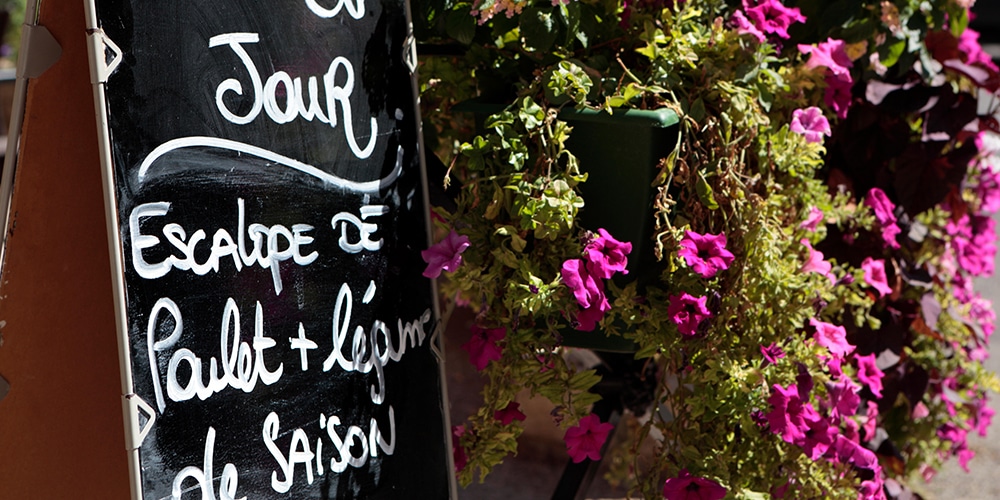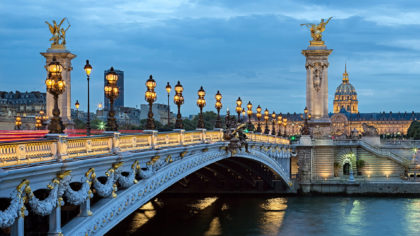You’ve found the perfect sidewalk café and the waiter approaches, but you aren’t quite sure what to say. No problem, or pas de problème, as the French say. Try these helpful French food etiquette tips and you’ll be eating and drinking like a local in no time.
What’s the Difference Between a Bistro and a Restaurant?
In the U.S. a bistro and restaurant are likely to be similar. Not so in Paris. Bistros in France are bustling, informal eateries and have a different atmosphere than restaurants. At a bistro, the serving staff is limited and it is perfectly normal for you to flag down staff to order, get the check and ask for just about anything else you may need aside from the server bringing you your food. At a restaurant, tables have dedicated servers that cater to all the diners’ needs.
Order Wine Like a Sommelier
French wine is often sorted on a wine list by region, not by wine type. Know your favorite wines and the regions they often hail from to impress your Parisian waiter. Here’s a short list of types of wines and the regions they can be found in:
- Chardonnay – Burgundy, Loire Valley
- Sauvignon Blanc – Loire Valley, Aquitaine, Languedoc
- Pinot Noir – Burgundy, Loire, Champagne or Alsace
- Cabernet – Bordeaux
- Big Blends – Cotes du Rhone
- Grenache – Provence, Languedoc
Take It Course by Course
The French value their lunch breaks and dinners out, which is why many Paris restaurants will adhere to a specific set of meal courses. Asking to swap out items or to forego a course altogether could be seen as an affront or at the very least could mean that you miss out on something amazing. So be sure to schedule plenty of time to linger over these common meal courses:
- Un apéritif – a pre-dinner drink
- Un amuse-bouche or amuse-gueule – a small snack to “delight the mouth”, typically one or two bites
- Une entrée – appetizer or starter (note: this is not the main course!)
- Le plat principal – the main course
- Le fromage – the cheese course always comes before dessert and in nicer restaurants comes out on its own cart
- Le dessert – the dessert
- Le café – coffee or espresso, often served without milk
- Un digestif – after-dinner drink
Where’s the Bill?
Servers in Paris don’t like to interrupt your meal with the check, so ask your waiter for the bill when you are ready to leave. Be prepared to pay your tip in cash, as most restaurants, save the really nice ones, won’t accept credit card tips.
Refresh Your French Foodie Vocab
Hopefully, you weren’t asleep in your high school French class. If you missed them, here are some common French food terms to know:
- Le petit déjeuner – Breakfast
- Le déjeuner – Lunch
- Le diner – Dinner
- Le goûter – Snack (in the afternoon)
- Le fromage – Cheese
- Boulangeries and Pâtisseries – Bakeries and pastry shops
- Le menu – when items are served “le menu” or “la formule”, it is a fixed-price meal, often with two or more courses
- À la carte – items are selected off a printed menu




